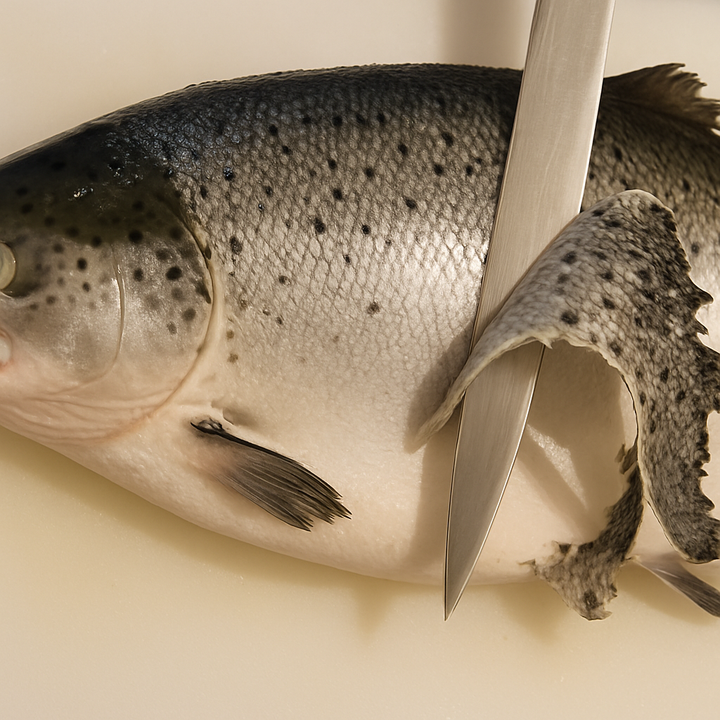All About Wasabi
Wasabi, a cornerstone of Japanese cuisine, holds a rich history and unique qualities that extend far beyond its common role as a sushi condiment.

Wasabi, a key element in Japanese cuisine, is often misunderstood.
Most associate it with sushi, but its history and characteristics go far beyond being a mere condiment.
Let’s dive deeper into the story of wasabi, exploring its origins, unique qualities, and role in Japanese food culture.
The History of Wasabi
Wasabi is indigenous to Japan and holds a unique place in its culinary heritage.
Traditionally grown and consumed in Japan, wasabi symbolizes the distinct tastes of Japanese cuisine.
Though it’s now synonymous with sushi, this pairing only began during the late Edo period.
Initially, wasabi was valued for its ability to neutralize fish odors and inhibit bacterial growth, qualities likely discovered through trial and error.
Its practical benefits, combined with its pungent flavor, quickly made it a staple across Japan.
The Science Behind Wasabi’s Unique Flavor
The sharp, aromatic pungency of wasabi is attributed to allyl isothiocyanate, also known as mustard oil.
When wasabi is grated, the plant’s cells break apart, releasing enzymes that convert a compound called sinigrin into mustard oil.
This volatile compound creates the distinct nose-tingling sensation. Interestingly, the wasabi plant itself isn’t spicy—its signature kick develops only after grating.
Wasabi’s spiciness fades quickly due to the volatility of mustard oil.
This fleeting pungency distinguishes it from the enduring heat of chili peppers, aligning more with Japanese preferences for subtle flavors.
A comparable spice, found in karami daikon (spicy radish), is similarly used in Japanese cuisine, particularly with soba noodles.
Types of Wasabi
Hon-wasabi vs. Seiyo-wasabi
Wasabi is categorized into two main types: Hon-wasabi (native Japanese wasabi) and Seiyo-wasabi (Western wasabi or horseradish).
While hon-wasabi belongs to the Eutrema genus, seiyo-wasabi falls under the Armoracia genus. Though they share similarities, their flavor, texture, and appearance differ significantly.
- Hon-wasabi: Typically cultivated for sushi and soba dishes, this category includes two subtypes:
- Sawa-wasabi: Also known as water wasabi, it grows in nutrient-rich, flowing water and is prized for its rootstock.
- Hatake-wasabi: Also called land wasabi, it’s cultivated in soil and primarily used for its leaves and stems in processed foods.
- Seiyo-wasabi: Commonly referred to as horseradish, this variety is used in many wasabi products worldwide. Most wasabi powders and mixes are made primarily from horseradish, with added colorants and flavors.
Popular Varieties of Hon-wasabi
- Mazuma (True Wife): Renowned for its balance of sweetness and pungency, Mazuma is considered the best for sushi. Its cultivation requires meticulous care, making it rare and highly valued.
- Daruma: Known for its dark leaves and fleshy roots, Daruma was once popular but has declined due to cultivation challenges.
- Masamidori: A descendant of Mazuma, this variety offers improved disease resistance and higher yields, making it increasingly popular.
- Shimane-sangou: This robust variety thrives in sunny, warm conditions and offers a harmonious balance of spiciness and sweetness.
The Challenge of Cultivating Wasabi
Wasabi is a fragile plant that naturally deteriorates over time, necessitating regular crossbreeding to preserve its quality and flavor.
To address this challenge, modern techniques like mericlone propagation—a method of cloning plants using tissue culture—are employed.
This helps stabilize new and improved varieties of wasabi.
Popular hybrids, such as Hyuga, Ishidaru, and Onimidori, have been developed to thrive under different environmental conditions, ensuring better adaptability and higher yields
Health Benefits of Wasabi
Wasabi’s antibacterial properties have been valued for over a millennium.
Historical texts even mention its use to neutralize fish toxins.
Today, scientific studies highlight a compound in wasabi called 6-Methylsulfinylhexyl isothiocyanate (6-MSITC), which offers numerous health benefits:
- Detoxification and antioxidative effects
- Improved blood circulation
- Inhibition of cancer cell metastasis
- Relief from hay fever and inflammation
- Prevention of diabetes complications
- Joint pain relief and skin health benefits
For sushi, wasabi’s detoxifying and bactericidal properties are especially significant, reducing the risk of foodborne illnesses.
Why Mazuma Wasabi is Superior for Sushi
Among countless varieties, Mazuma is revered for its exquisite balance of sweetness, pungency, and texture.
Its reddish-purple stem makes it instantly recognizable. Unlike mass-produced wasabi varieties, Mazuma requires 2-3 years to cultivate and is exclusively supplied to high-end sushi restaurants.
Its creamy, aromatic profile complements sushi perfectly, enhancing the delicate flavors without overpowering them.
Using Wasabi in Sushi
The amount of wasabi used varies based on the sushi topping.
Low-fat ingredients like squid pair well with wasabi’s light pungency, while higher-fat cuts like toro tuna require more to balance their richness.
For sushi chefs, wasabi is essential; it’s not just a condiment but an integral part of the dish. Its anti-parasitic and antibacterial effects also enhance food safety, making it indispensable.
Selecting the Best Wasabi
When choosing fresh wasabi, look for a plant that is consistently thick from root to tip, with a vibrant green color. Bumps on the surface indicate healthy growth. Although wasabi is available year-round, it’s most pungent during the colder months, making November to February its peak season.
Grating Wasabi: The Art and Tools
Grating wasabi is an art. The cells near the tip are older and spicier, while those closer to the stem are younger and milder.
Grating in a circular motion without pressing too hard releases the full aroma and flavor. Various graters can be used, each with unique results:
- Sharkskin Graters: Traditional and highly effective, they produce a creamy, aromatic wasabi paste. Proper care is essential to maintain their quality.
- Stainless Steel Graters: Convenient and fast, they create a coarser texture but lack the depth of flavor.
- Ceramic Graters: Popular for their ease of use, they yield a clear spiciness but miss the subtle aroma achieved with sharkskin.
Storing Wasabi
To preserve fresh wasabi, wrap it in a damp newspaper, then plastic wrap, and refrigerate.
Alternatively, place it in a cup of water in the fridge. For long-term storage, freeze the wasabi, grate it directly from frozen, and refreeze any leftovers.
Famous Wasabi Farming Regions
Japan is home to several renowned wasabi-producing regions, each with unique growing conditions:
- Abashiri (Hokkaido) – Known for its cool temperatures and abundant natural springs, perfect for wasabi farming.
- Iwaizumimachi (Iwate Prefecture) – Famous for its mountainous terrain and crystal-clear streams.
- Okutama (Tokyo Metropolis) – Offers a unique blend of mountain-fed rivers and proximity to urban centers.
- Nakaizu (Shizuoka Prefecture) – A hub for wasabi cultivation, with mineral-rich waters from the Izu Peninsula.
- Utogi (Shizuoka Prefecture) – The birthplace of wasabi cultivation, thriving in its pristine, cool water sources.
- Inami (Toyama Prefecture) – Known for its rich soil and ample rainfall, producing top-quality wasabi.
- Azumino (Nagano Prefecture) – Renowned for its high-altitude climate and clear mountain water.
- Hikimi (Shimane Prefecture) – Celebrated for its traditional wasabi farming methods and unspoiled natural environment.
These regions are celebrated for their pristine water sources and optimal climates, which contribute to the exceptional quality of Japanese wasabi.
Conclusion
Wasabi is far more than a simple sushi accompaniment. Its rich history, complex flavor profile, health benefits, and culinary versatility make it an integral part of Japanese culture.
Whether grated fresh for high-end sushi or used in processed forms, wasabi remains a testament to Japan’s culinary artistry and dedication to quality.


